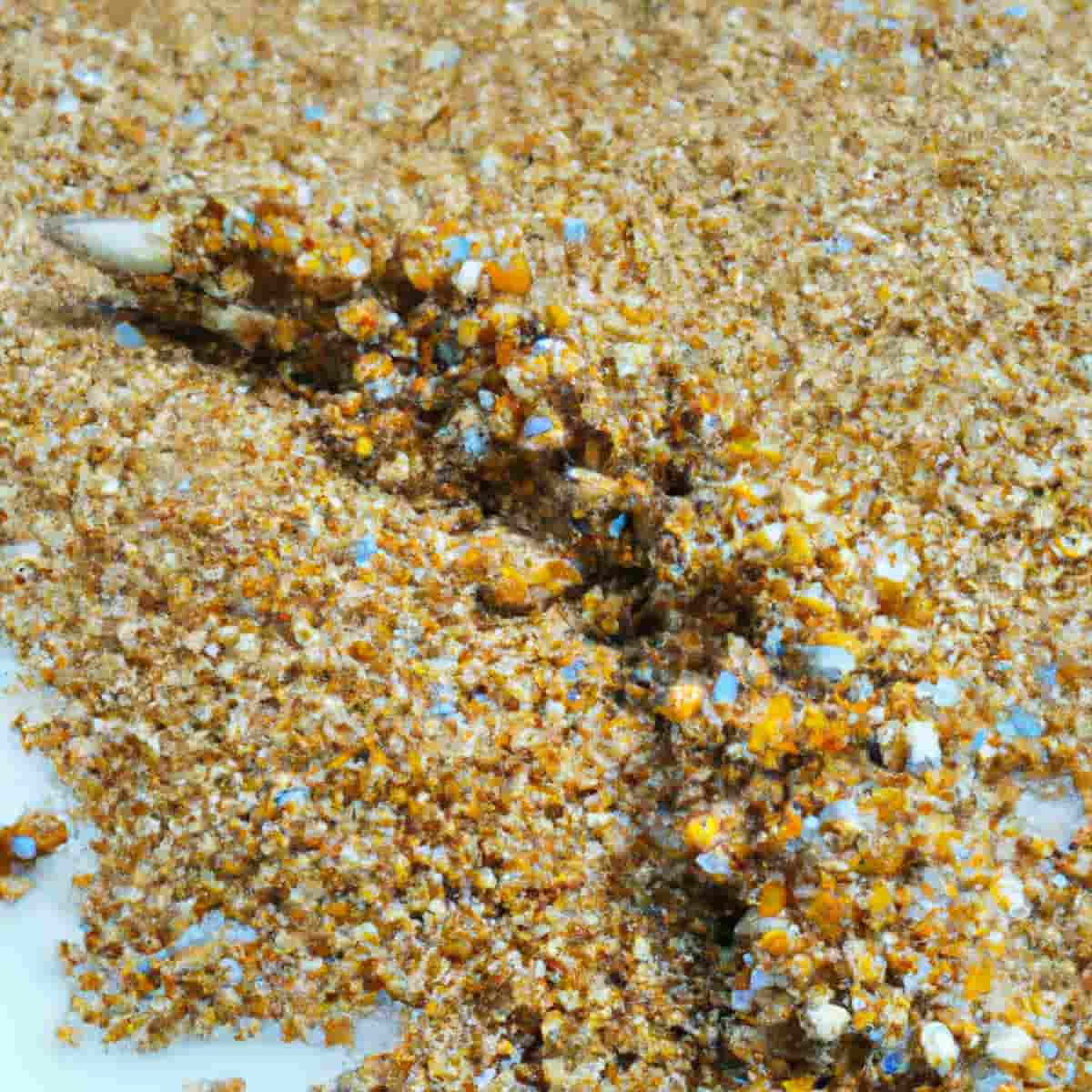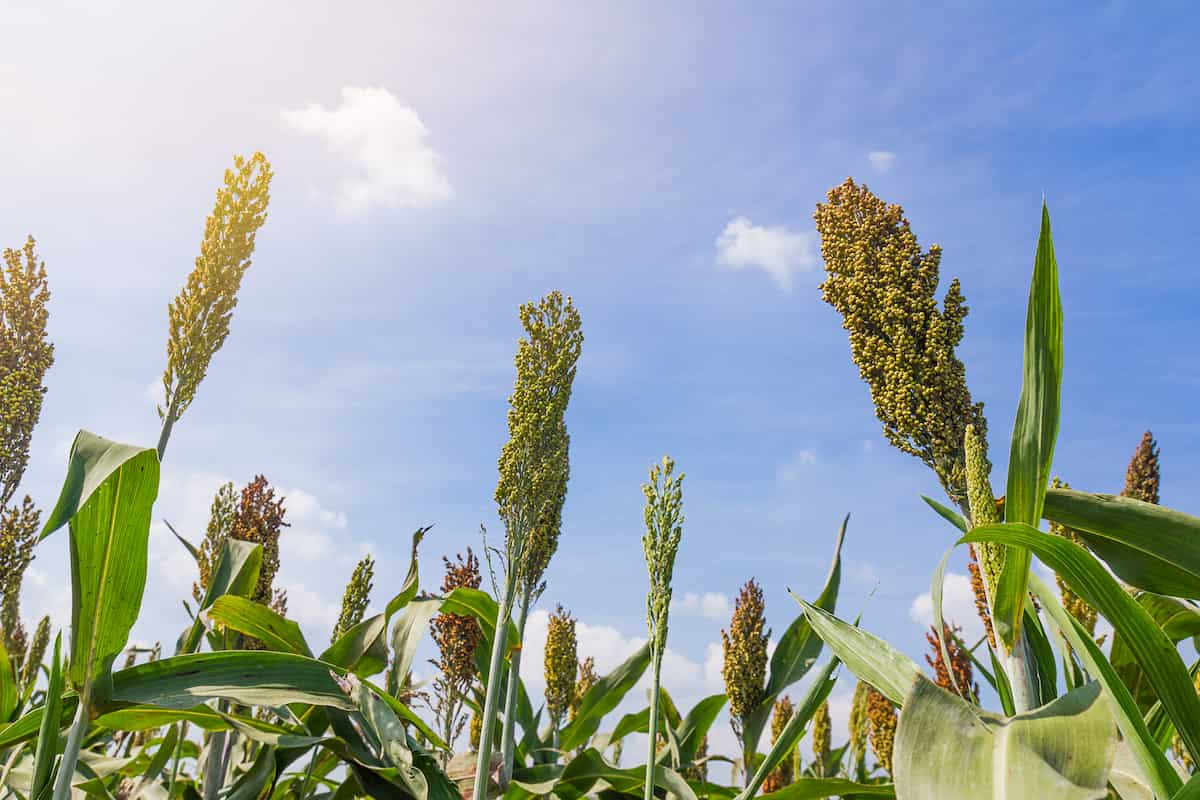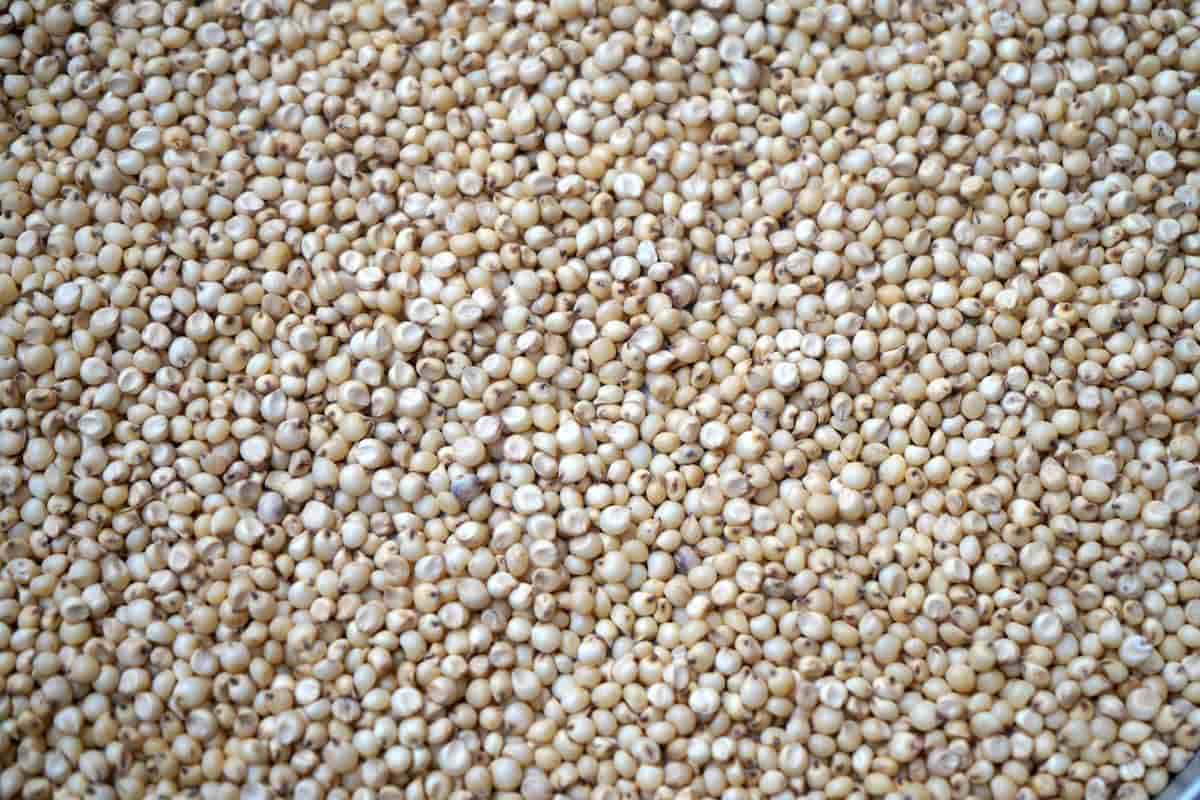The fungal disease affects sorghum grains globally. Sorghum Head Mould or Blight is another name for this disease. In warm, humid regions, it reduces sorghum grain output and quality. To avoid and treat this disease, sorghum growers must understand the fungus’ disease cycle, its habitat, and risk factors. Sanitation, crop rotation, and fungicides should be used. This article covers sorghum grain mold disease symptoms, biology, and control.

Grain Mould/Head Mould/Head Blight Disease Management in Sorghum
The Causal Organism of Sorghum Grain Mould Disease
- Fusarium verticillioides, a fungus in diverse soil types, cause the illness.
- It was observed that sorghum kernels have or may be affected by almost 32 fungal genera.
- Fusarium, Curvularia, Alternaria, Aspergillus, and Phoma are sorghum crops’ five most common fungi.
- This fungal development can degrade grain quality, resulting in lower yields and economic losses for farmers.
The Disease Cycle of Sorghum Grain Mould Disease
- The fungi infect sorghum plants through wounds or natural openings to start the disease cycle. The fungus then poisons plant cells. The fungus grows white, fluffy conidia. Wind, water, insects, and other creatures spread conidia.
- After falling on sorghum grains, conidia germinate and breach the outer coating. The fungus produces conidia, which spread to nearby grains. Fungi generate poisons that discolor and destroy grain. Grain smells musty.
- The disease cycle ends when conidia spreads to other grains and repeat. The fungus can infect a field of sorghum grains, causing significant crop losses.
Mode of Spread and Survival of the Pathogen in Sorghum Crop
The pathogen can survive and live in the soil for many years. Wind-borne spores, polluted irrigation, and soil are all ways for the infection to spread. Conidia borne by wind currents are the principal mechanism of fungal dispersion. Most of the time, the fungus exists as saprophytes and parasites within decaying plant remnants.
Causes / Conditions Favorable for Sorghum Grain Mould Disease Spread in the Field.
- High temperatures and relative humidity encourage fungal spore formation on sorghum grains, spreading the disease.
- Poor soil nutrition makes sorghum grains susceptible to the disease. Poor soil nutrition promotes fungal development and disease transmission.
- Insects like aphids, leafhoppers, and thrips can transmit fungal spores from plant to plant, boosting field disease transmission.
- Late planting, poor crop rotation, and inadequate fungicide and pesticide usage can help spread the disease.
- Sorghum kernels mold in damp weather. Wetness accelerates mold growth.
- Rainfall during flowering and grain-filling causes heavy grain deformation.
- Small ear heads are susceptible to the disease.
Symptoms of Sorghum Grain Mould Disease
- Discolored and shrunken grains, as well as a moldy appearance, are symptoms of this condition.
- The presence of greyish-white fungal growth on the surface of the sorghum grains distinguishes the disease.
- The development of a white, powdery mold on the grains is the most visible indication of sorghum grain mold disease in the field. This mold is generally seen on the heads and visible to the naked eye. Mold may also be seen on the stem and leaves. The mold may also be found on the seedlings in rare situations.
- The sorghum grain mold can produce deformed and discolored grain heads and shrunken and fractured grains. Mold can also create discolored and shriveled grains and shriveled and deformed kernels.
- The sorghum grain mold can also cause the leaves to become yellow or brown and curl or wilt. The mold can also make the stalks weak and brittle. The disease can also affect grain quality and cause grains to be smaller than normal.
Percentage of Yield Loss Due to Sorghum Grain Mould Disease in Sorghum Crop
- The yield loss due to the Sorghum Grain Mould Disease depends on various factors, including the severity of the infection, the climate, and the type of sorghum variety that is planted.
- In general, yield losses can range anywhere from 15-50%. Yield losses can be higher in areas with wetter climates or when the fungus is present in large numbers.
In case you missed it: Downy Mildew Disease Management in Sorghum: Symptoms, Treatment, Chemical, Biological, Natural, and Organic Control

Diagnosis of Sorghum Grain Mould Disease in Sorghum Crop
- The semi-tectum and moniliforme species of Fusarium generally show an appearance that is fluffy, white, or pinkish.
- Curvularia lunata develops black color on the sorghum kernels.
- The type of organism engaged and the disease’s severity will affect the symptoms.
Cultural Control Measures of Sorghum Grain Mould Disease
- Crop Selection: When choosing a sorghum variety for planting, look for one resistant to grain mold. It may be accomplished by examining the resistance ratings of the variety in field testing.
- Crop rotation: Planting Sorghum in a new field each year helps minimize the quantity of mold in the soil.
- Planting Date: Planting Sorghum early in the season will assist in preventing high humidity periods, which might raise the danger of grain mold.
- Plot Selection: To limit grain mold’s danger, choose a well-drained field with adequate air circulation.
- Fertilization: Applying the proper nitrogen, phosphate, and potassium levels to the crop will help maintain it healthily and limit the danger of grain mold.
- Weed Management: Using correct weed control strategies to keep weeds in check will help lower the danger of grain mold.
- Harvesting Sorghum When the Grain Is Dry: Harvesting sorghum when dry will help lessen the danger of grain mold.
- Biological Control measures of Sorghum Grain Mould Disease
Biological Control Measures for the Sorghum Grain Mould
Fungal Antagonists: Fungi that cause sorghum grain mold to compete with fungal antagonists. Trichoderma, Gliocladium, and Clonostachys fungus are examples. Spray or inoculate these fungi on Sorghum. Fungus creates poisons that suppress harmful fungi, preventing illness. Beneficial insects help control sorghum grain mold. Lady beetles, lacewings, and predatory mites are useful. They eat fungal spores, lowering sorghum crop infestation.
Microorganisms: Some microorganisms help control sorghum grain mold disease. Bacillus subtilis, Pseudomonas fluorescens, and Trichoderma viride are bacteria and fungi. Spraying or inoculating Sorghum with these bacteria. They generate chemicals that inhibit harmful fungi, preventing illness.
Chemical Control Measures of Sorghum Grain Mould Disease
- Fungicides prevent sorghum grain mold disease best. Controlling fungal disease requires fungicides. They can inhibit disease transmission if used properly.
- Thiophanate-methyl, chlorothalonil, and mancozeb control sorghum grain mold disease. To maximize protection, use these chemicals at the start of blooming and repeat every 10–14 days till harvest.
- In case of intermittent rainfall during earhead emergence, spray Mancozeb 1 kg/ha or Captan 1 kg + Aureofungin-sol 100 g/ha one week later at the milky stage.
- To control Phanerogamic partial root parasites like Striga asiatica and Striga densiflora, spray Fernoxone (sodium salt of 2, 4-D) at 450g/500 mL.
In case you missed it: Ergot or Sugary Management in Sorghum: Disease Symptoms, Treatment, Chemical, Biological, Natural, and Organic Control

Preventive Measures for Control of Sorghum Grain Mould Disease
- Sanitation prevents sorghum grain mold disease. To stop the infection, kill infested plants. To prevent infestation, remove and eliminate any plant material from the field.
- Planting disease-resistant sorghum types can also help control the illness. Many sorghum types are fungus-resistant and can minimize illness severity.
- Storing harvested sorghum grains properly prevents disease transmission. Keep collected grains in a dry, cold, well-ventilated area to prevent infection.
- Monitoring: Early disease diagnosis and treatment need regular crop monitoring.
Conclusion
Sorghum grain mold is a serious fungal disease that can cause yield losses if not managed properly. A combination of chemical, cultural, and biological control measures are necessary to reduce the amount of fungus present in the sorghum crop and reduce the yield.
- Natural Solutions for Pest Control in Flower Gardens
- Types of Fungicides Used in Agriculture
- Common Issues in the Fruit Development Stage of Pomegranate Farming
- Fruit Development Issues in Papaya: Easy Solutions and Treatment
- Soil-Borne Diseases and How to Protect Your Plants
- Practices to Prevent Disease Spread in the Garden
- From Wilted to Thriving: How to Treat Root Rot Naturally in Houseplants
- Natural Remedies to Cure Brown Spots on Fig Tree Leaves
- Natural Solutions for Poinsettia Problems: 100% Effective Remedies